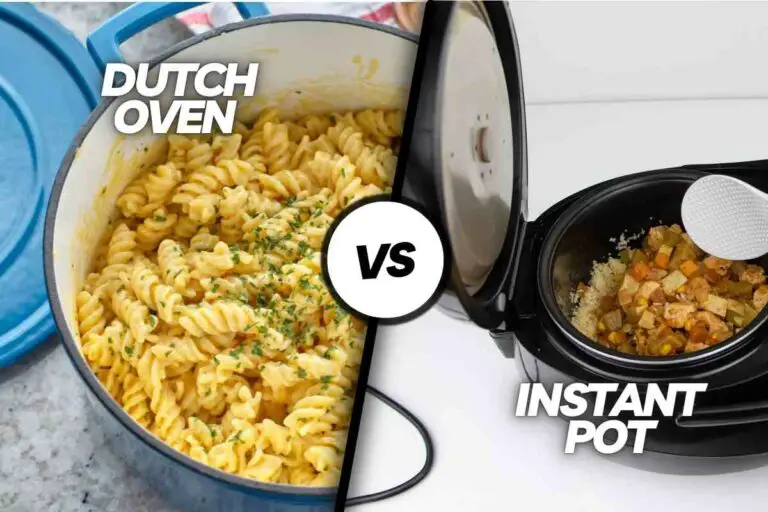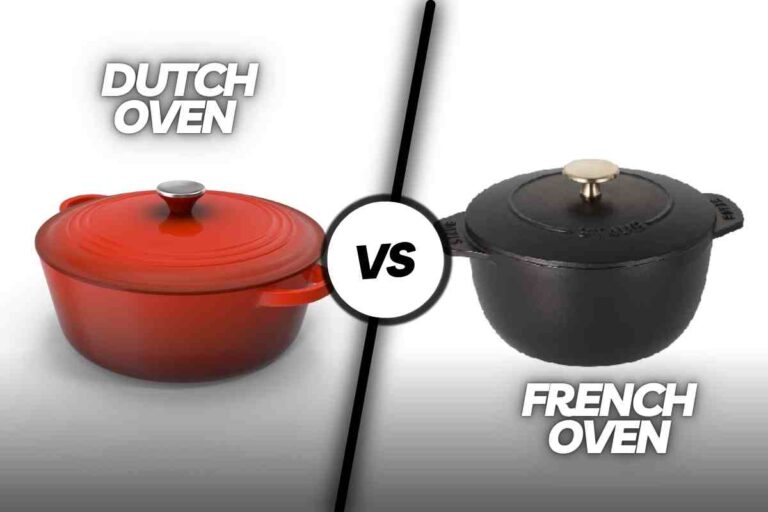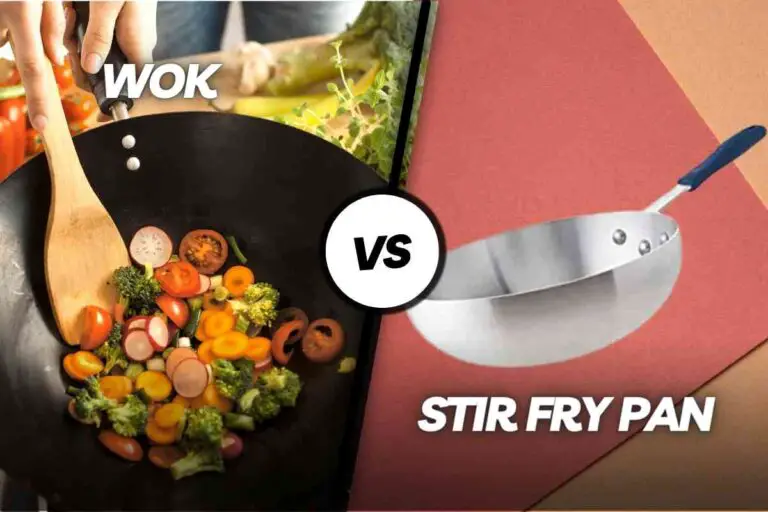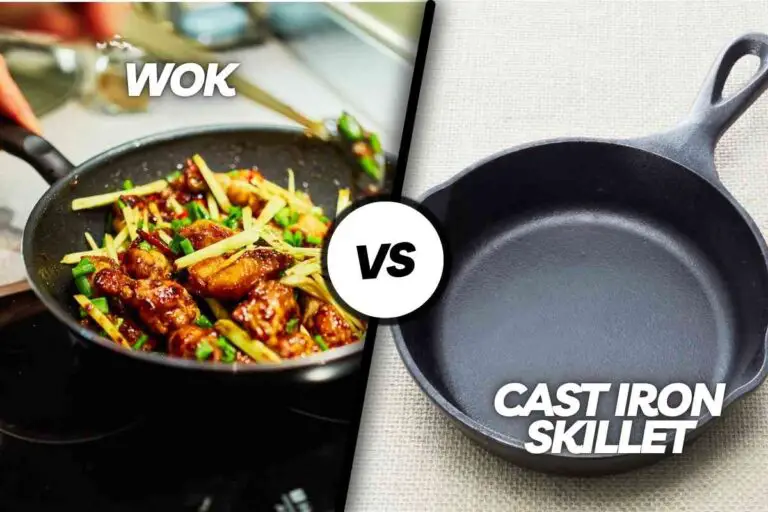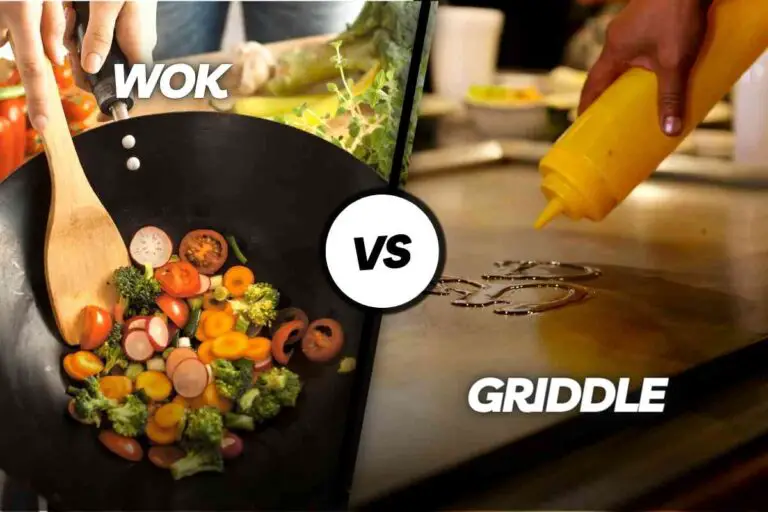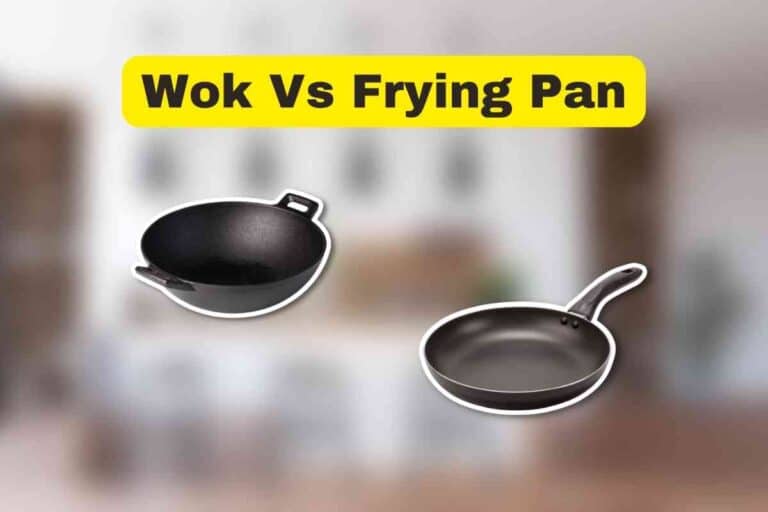6 Considerations: Dutch Oven Vs Casserole Dish
The main difference between a Dutch Oven and a Casserole Dish lies in their cooking methods and intended uses. Dutch ovens excel in versatile stovetop-to-oven cooking, while casserole dishes are ideal for baking and serving.
A casserole dish and a Dutch oven are both kitchen cookware that is used for baking, stewing, braising, and roasting food. The main difference between them is their construction and design.
A casserole dish is typically made of ceramic, glass, or porcelain and is best used for baking casseroles and other oven dishes.
A Dutch oven, on the other hand, is made of cast iron or stainless steel and can be used both on the stovetop and in the oven. It is more versatile and can be used for soups, stews, roasts, and even baking bread.
Additionally, a Dutch oven has a tight-fitting lid that retains moisture and heat, making it ideal for slow cooking and braising.
6 Aspects: Dutch Oven Vs Casserole Dish
| Aspect | Dutch Oven | Casserole Dish |
|---|---|---|
| Cooking Versatility | Excellent for stovetop and oven | Primarily for oven baking |
| Material Options | Predominantly cast iron | Various materials (ceramic, glass, etc.) |
| Heat Retention | Exceptional | Good |
| Serving Convenience | Good for stovetop-to-table | Designed for serving |
| Shape Options | Round or oval | Round, oval, rectangular, etc. |
| Common Size | Various sizes available | Often 9 x 13 inches (adjustments may be needed) |
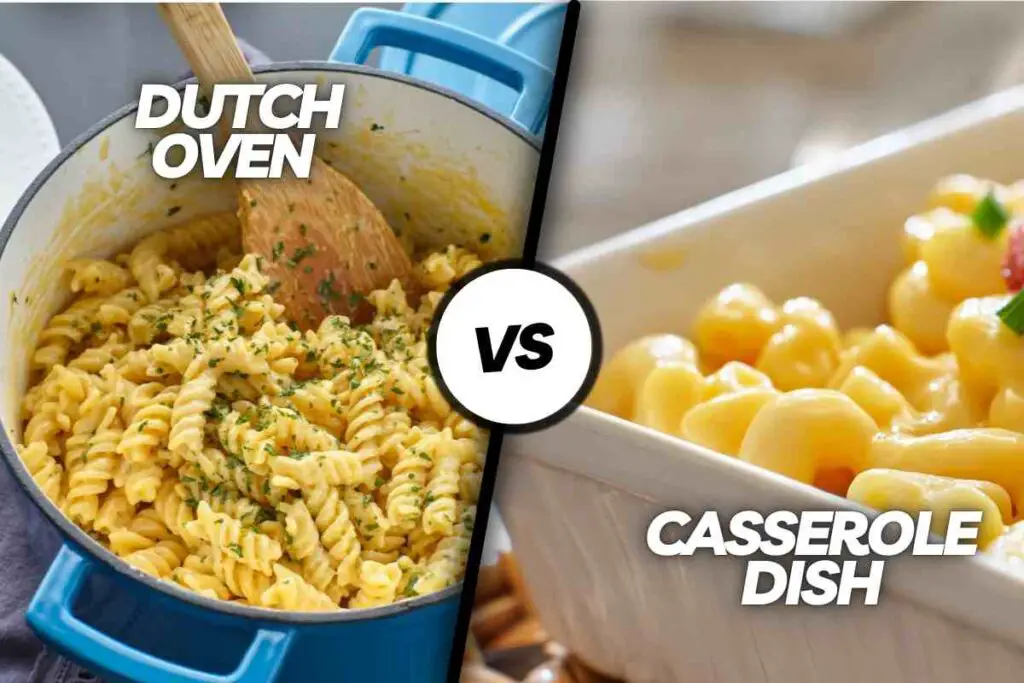
Characteristics of Dutch Ovens
A Dutch oven is a heavy-duty cooking pot with thick walls and a tight-fitting lid. It’s designed to handle a wide range of cooking techniques, from braising and frying to simmering and baking.
Dutch ovens are known for their exceptional heat retention and distribution, making them a favorite among chefs and home cooks alike.
Material and Construction
Dutch ovens are typically made of cast iron, which is excellent at retaining and evenly distributing heat. This ensures that your food cooks evenly, reducing the risk of hot spots that can lead to uneven cooking.
The lid of a Dutch oven is also heavy and snug-fitting, sealing in moisture and flavors.
Versatility
One of the standout features of Dutch ovens is their versatility. You can use them on both the stovetop and in the oven, making them ideal for recipes that require a combination of cooking methods.
Whether you’re searing a steak on the stovetop or slow-cooking a stew in the oven, a Dutch oven can handle the job.
Heat Retention
Dutch ovens excel at retaining heat, which is crucial for slow cooking and braising. Once heated, they stay hot for a long time, maintaining a consistent temperature throughout the cooking process. This makes them perfect for dishes that benefit from long, slow cooking.
Characteristics of Casserole Dishes
A casserole dish, on the other hand, is a large and deep pan or bowl designed for baking and serving. It’s available in various materials, including ceramics, glass, cast iron, steel, and aluminum.
Casserole dishes are often used for recipes that require baking in the oven, such as casseroles, lasagnas, and baked desserts.
Material and Construction
Casserole dishes offer flexibility in terms of materials. You can choose one that suits your cooking preferences and style.
For example, glass and ceramic casserole dishes are excellent for even heating, while cast iron options provide a rustic touch to your dishes. They typically come with a lid, although it may not fit as snugly as a Dutch oven’s lid.
Versatility
Casserole dishes are versatile in their own right. They are designed for both baking and serving, which means you can take your creation straight from the oven to the dining table. They’re perfect for recipes that require layering ingredients and baking them to perfection.
Size Variations
Casserole dishes come in various sizes, but one of the most common dimensions is 9 x 13 inches. It’s essential to note that if a recipe specifies a particular casserole dish size, you may need to make adjustments when using a different-sized dish to ensure even cooking.
Similarities Between Dutch Ovens and Casserole Dishes
Now that we’ve explored the unique characteristics of Dutch ovens and casserole dishes, let’s take a moment to highlight their commonalities:
- Round or Oval Shapes: Both Dutch ovens and casserole dishes often feature round or oval shapes. This design allows for even heat distribution and helps with the circulation of flavors during cooking.
- Suitable for Oven Use: Both types of cookware are oven-safe, which means you can use them for dishes that require baking or roasting in the oven.
- Tight-Fitting Lids: Dutch ovens and casserole dishes typically come with lids that fit snugly. These lids help retain moisture and heat during cooking, ensuring that your dishes turn out delicious and tender.
- Available in Cast Iron: While casserole dishes come in various materials, both Dutch ovens and some casserole dishes are available in cast iron. Cast iron offers excellent heat retention and durability.
Main Difference
So, what sets Dutch ovens and casserole dishes apart? The primary difference lies in their stovetop usability.
- Dutch Ovens: Dutch ovens are designed to be used on both stovetops and in ovens. You can start cooking on the stovetop to sear or sauté ingredients and then transfer the Dutch oven directly into the oven for further cooking.
- Casserole Dishes: Casserole dishes, while versatile in their own right, are not intended for stovetop use. They are primarily meant for baking in the oven. If a recipe requires stovetop cooking before baking, you’d need to use a separate pan for that initial stovetop step.
What Are the Materials Used to Make Casseroles and Dutch Ovens?
Cast iron, ceramic, stainless steel, and enameled cast iron are some common materials used to make casseroles and Dutch ovens. Cast iron is a traditional pots and pans material that is renowned for its heat retention and robustness.
Because it is so resistant to heat and scratches, ceramic is a common material for oven-safe casseroles. Dutch ovens are frequently made of stainless steel since it is lightweight and simple to maintain.
Cast iron is combined with an enamel coating that resembles porcelain to create enameled cast iron, which is extremely robust and corrosion-resistant.
Similarities Between Casserole Dish and Dutch Oven
Both casserole dishes and Dutch ovens are multipurpose cooking vessels used for baking and slow cooking. They are both constructed of durable materials, such as ceramic or cast iron, which hold heat well and promote even cooking.
Both may be used on the cooktop and in the oven to prepare one-pot dinners. Moreover, both are suitable for baking, braising, roasting, and simmering.
However, Dutch ovens are typically deeper and have a tighter-fitting lid, making them better suited for long, slow cooking, whereas casserole dishes are typically shallower and have a glass lid, making them better suited for shorter cooking times or dishes that benefit from being able to see the contents.
What is the Difference Between Casserole Dish and Dutch Oven?
Dutch ovens are thick-walled cooking pots with tight-fitting lids that retain heat throughout the cooking process. They are ideal for braising meats, baking, and assembling casseroles. Dutch ovens come in several sizes and can be used on the stovetop or in the oven, depending on your needs.
Although Dutch ovens are dishwasher-safe, you will need to follow the manufacturer’s cleaning instructions carefully. It is important to avoid drying out the pot or overheating it.
Instead, add some fat or liquid to the bottom of the pot before cooking. You can also hand-wash an enamel-coated Dutch oven if necessary. Just be sure to let it cool before you use a dishcloth or sponge to avoid damaging the enamel.

Try this Enameled Cast Iron Covered Dutch Oven.
Heat distribution
Dutch ovens have a variety of benefits over other types of cookware. They are durable and distribute heat evenly throughout the cooking surface. These ovens are often made from enameled cast iron, which is a good heat conductor.
The enamel finish also ensures a non-stick surface. They are a good choice for slow-cooking recipes. In addition to their durability, Dutch ovens are visually appealing, which is important when choosing one for your home.
Dutch ovens are a bit heavier than other types of ovens, but they also distribute heat evenly, making them an excellent choice for baking and other high-heating dishes.
Unlike regular frying pans, which often heat unevenly, Dutch ovens ensure a uniform cooking surface and caramelized food with an even layer of flavor.

Try this KOOV Casserole Dish Set.
Construction
If you are camping or hiking and want to bring along some essential cooking equipment, a Dutch oven may be exactly what you are looking for. This thick, heavy pot with a tight-fitting lid is practically indestructible.
A Dutch oven is an ideal tool for baking, boiling, searing, simmering, roasting, and more. It is easy to clean and is indestructible, which makes it an excellent basecamp tool.
While the traditional Dutch oven is made of cast iron, enameled versions are more expensive than the plain ones. You can expect to spend $50 to $500 for an enameled Dutch oven.
On the other hand, bare cast iron Dutch ovens can cost as little as $30 to 80. Regardless of the cost, a good cast-iron Dutch oven will last you a lifetime.
However, enameled Dutch ovens may require some care and maintenance. You should avoid dropping or slapping them on the stove. If you do drop a Dutch oven, you should take care to protect it from scratches and dents.
Cost
A Dutch oven is a cooking pot with thick walls used to bake or serve food. These pots are generally made of cast iron, but other materials are suitable for use as casseroles, including ceramic and glass.
A Dutch oven is easier to clean and has handles on both ends. The price of a Dutch oven can range from under $100 to well over $400, depending on the model you buy.
However, more expensive models tend to have better quality control, a lifetime warranty, and prestige.
The price is a factor of several factors, including where the product is made and local labor costs.
Safe To Cook
When you’re cooking something in a Dutch oven, you can be more confident that you’re using a safe cooking pot.
You’ll be able to avoid dangerous chemicals and metals that could leach into your food, which can cause health problems. Dutch ovens are dishwasher safe, which makes cleanup easier.
Dutch ovens are incredibly versatile. They can be used for everything from baking bread to braising meat. They’re even great for simmering stews. The list of possible recipes is nearly endless.
What Can You Cook in a Dutch Oven?
A Dutch oven is a versatile piece of cookware that can be used for a variety of dishes. Popular dishes that can be cooked in a Dutch oven include soups, stews, casseroles, breads, cakes, roasts, and one-pot dishes.
Can You Use a Casserole Dish on the Stovetop?
No, you cannot use a casserole dish on the stovetop. You can only use them in the oven or microwave.
What Can You Use Instead of a Casserole Dish?
You could use a baking dish, roasting pan, soufflé dish, lasagna pan, or a deep pie plate.
Tips for Using Dutch Oven
Here are some tips for using a Dutch oven:
- Season your Dutch oven before first use by washing and drying it, then applying a thin layer of oil to the entire surface and heating it in an oven for an hour.
- Always preheat your Dutch oven before adding food to ensure even cooking.
- Brown food on the stovetop before transferring it to the oven for slow cooking.
- Use a tight-fitting lid to trap moisture and create a self-basting environment.
- When baking bread, place a sheet of parchment paper on the bottom of the oven to prevent sticking.
- Use a trivet or heat-proof handle to lift the hot Dutch oven out of the oven.
- Clean your Dutch oven by hand, using warm water and a mild soap. Avoid using steel wool or abrasive cleaners as they can scratch the surface.
- Store your Dutch oven in a cool, dry place to prevent rust and maintain its quality.
FAQs
Is a Dutch Oven the Same as a Casserole Dish?
No, a Dutch Oven and a Casserole Dish are not the same, although they can be used for similar cooking methods.
Difference Between Dutch Oven and Casserole Dish
A Dutch Oven is typically made of cast iron and has a tight-fitting lid, while a Casserole Dish can be made of various materials and may or may not have a lid.
Is a Casserole Dish the Same as a Dutch Oven?
No, a Casserole Dish and a Dutch Oven are not the same, although they can be used interchangeably in some cases.
Is a Dutch Oven a Casserole Dish?
A Dutch Oven can be used as a Casserole Dish, but it is not specifically designed for that purpose.
Difference Between Casserole and Dutch Oven
A Casserole is a dish used for baking or roasting in the oven and can be made of various materials, while a Dutch Oven is a heavy, deep cooking pot with a lid that can be used on the stovetop or in the oven and is typically made of cast iron.
Can You Use a Casserole Dish as a Dutch Oven?
A Casserole Dish can be used as a Dutch Oven in some cases, but it may not be as effective for certain cooking methods.
Is a Cast Iron Casserole the Same as a Dutch Oven?
A Cast Iron Casserole can be very similar to a Dutch Oven, but the specific design and features can vary depending on the manufacturer.
Can You Use a Dutch Oven as a Casserole Dish?
Yes, a Dutch Oven can be used as a Casserole Dish for baking or roasting, but it may not be as shallow as a traditional Casserole Dish.
Can I Use a Casserole Dish Instead of a Dutch Oven?
It depends on the specific recipe and cooking method, but a Casserole Dish can be used as a substitute for a Dutch Oven in some cases.
Can I Use a Dutch Oven Instead of a Casserole Dish?
Yes, a Dutch Oven can be used instead of a Casserole Dish for baking or roasting, but it may not be as shallow as a traditional Casserole Dish.

